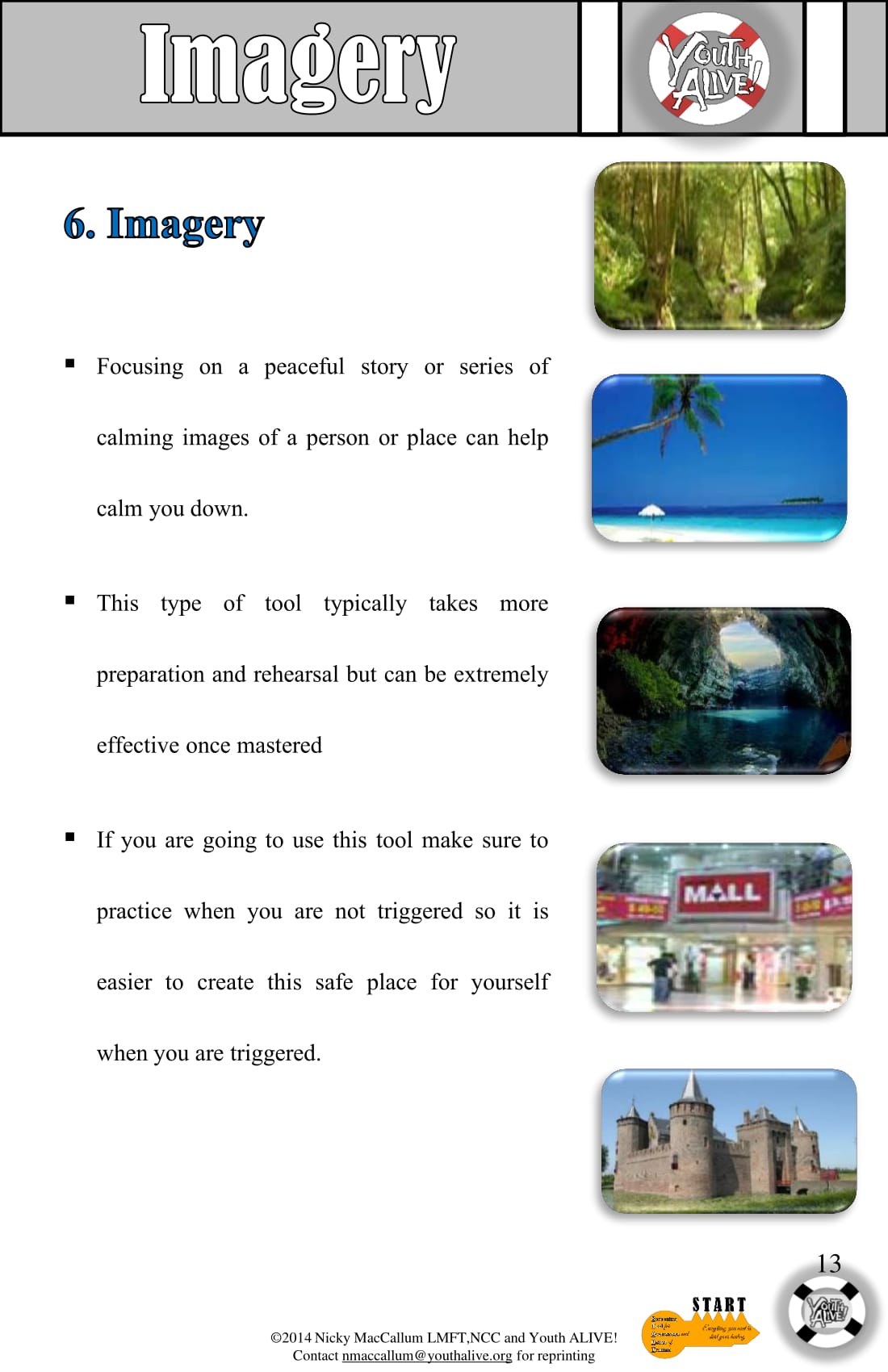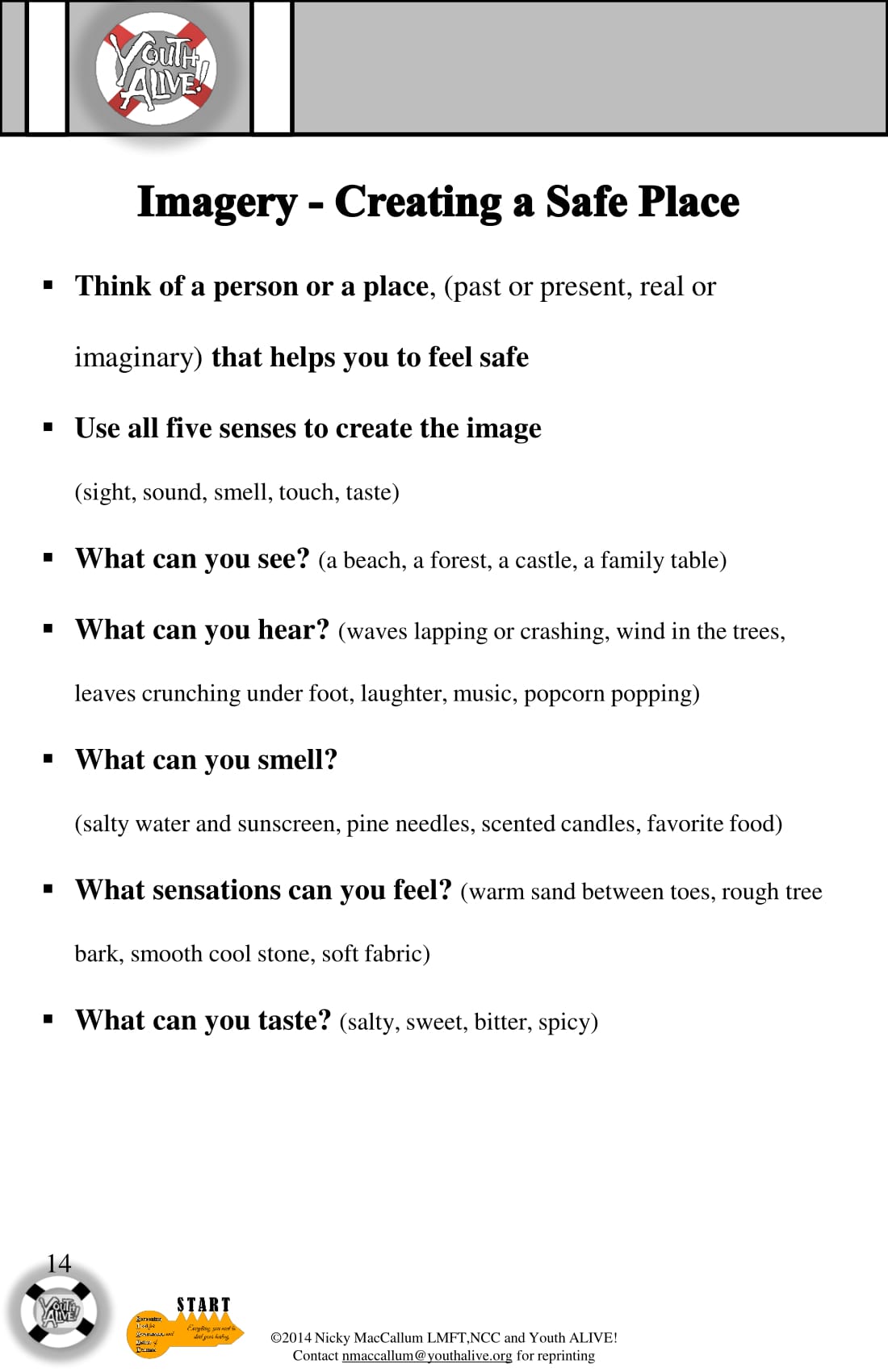Introduction
Like sensory grounding, the point of this Imagery activity is to shift one’s attention. In this case, that is achieved by focusing on a peaceful story or series of calming images of a person or place. This person or place doesn’t have to be something you’ve encountered in your life – you can make it up. The point is to be detailed when thinking about it. For example, if you are focusing on a particular place, a couple details you might take into consideration include: What can you see (e.g. a beach, a forest, a castle, etc.)? What can you hear (waves, music, laughter, etc.)? What can you smell? Essentially you are describing the scene in detail to yourself.
This type of tool typically takes more preparation and rehearsal but can be extremely effective once mastered. Be sure to check out the other sections of this page for more guidance.
How it Works
1. Imagery
- Focusing on a peaceful story or series of calming images of a person or place can help calm you down
- This type of tool typically takes more preparation and rehearsal but can be extremely effective once mastered
- If you are going to use this tool make sure to practice when you are not triggered so it is easier to create this safe place for yourself when you are triggered
2. Imagery – Creating a Safe place
- Think of a person or a place, past or present, real or imaginary, that helps you to feel safe
- Use all five senses to create the image (sight, sound, smell, touch, taste)
- What can you see? (a beach, a forest, a castle, a family table)
- What can you hear? (waves lapping or crashing, wind in the trees, leaves crunching under foot, laughter, music, popcorn popping)
- What can you smell? (salty water and sunscreen, pine needles, scented candles, your favorite food)
- What sensation can you feel? (warm sand between toes, rough tree bark, smooth cool stone, soft fabric)
- What can you taste? (salty, sweet, bitter, spicy)


